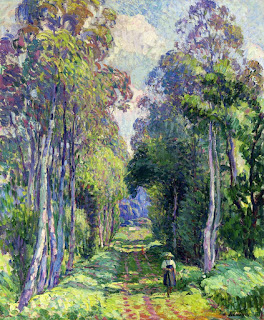The final chapter of David Perkins’s The Intelligent
Eye, called “Building the Mind through Art”, is perhaps the most important one.
Perkins rounds up what he has said by giving the warning that stereotypes are
the most insidious of temptations. Regarding looking at art, the temptation is
to treat art as yielding up all to a glance. Looking at art not only demands
experiential intelligence, it also demands reflective intelligence, which is
the knowledge, skills and attitudes that contribute to mental self-management.
At the broadest level, this controlling role of reflective intelligence can be
viewed as a matter of dispositions. It is only when we put together the
deliberative and managerial powers of reflective intelligence with the quick
and flexible response mechanisms of experiential intelligence that we truly
have the intelligent eye.
Perkins contends that what is true of art holds for
many other facets of life as well. Looking at art, with its various features
such as sensory anchoring, instant access, personal engagement, dispositional
atmosphere, wide-spectrum cognition and multi-connectedness, makes it a
particularly supportive platform for building thinking dispositions. The
challenge is one of transfer, which Perkins defines as “the impact of learning
in one context on performance in other significantly different contexts”. For
transfer to occur, the conditions needed have to be present. Perkins holds that
the conditions for transfer can be engineered into instructional situations.
Apart from specifically teaching transfer, there are two alternative
approaches:
- Abundant and diverse practice – Well-mastered skills are more likely to stand up in new contexts.
- Reflective awareness of principles and deliberate mindful connection making – These encourage seeing the common principles that bridge disparate contexts.
In nourishing the thinking dispositions, art has a distinctive role to play. Its liberal borders help us to carry good thinking dispositions nurtured in the context of art to the wider world. Where most disciplines dig moats, Perkins says, art builds bridges.










